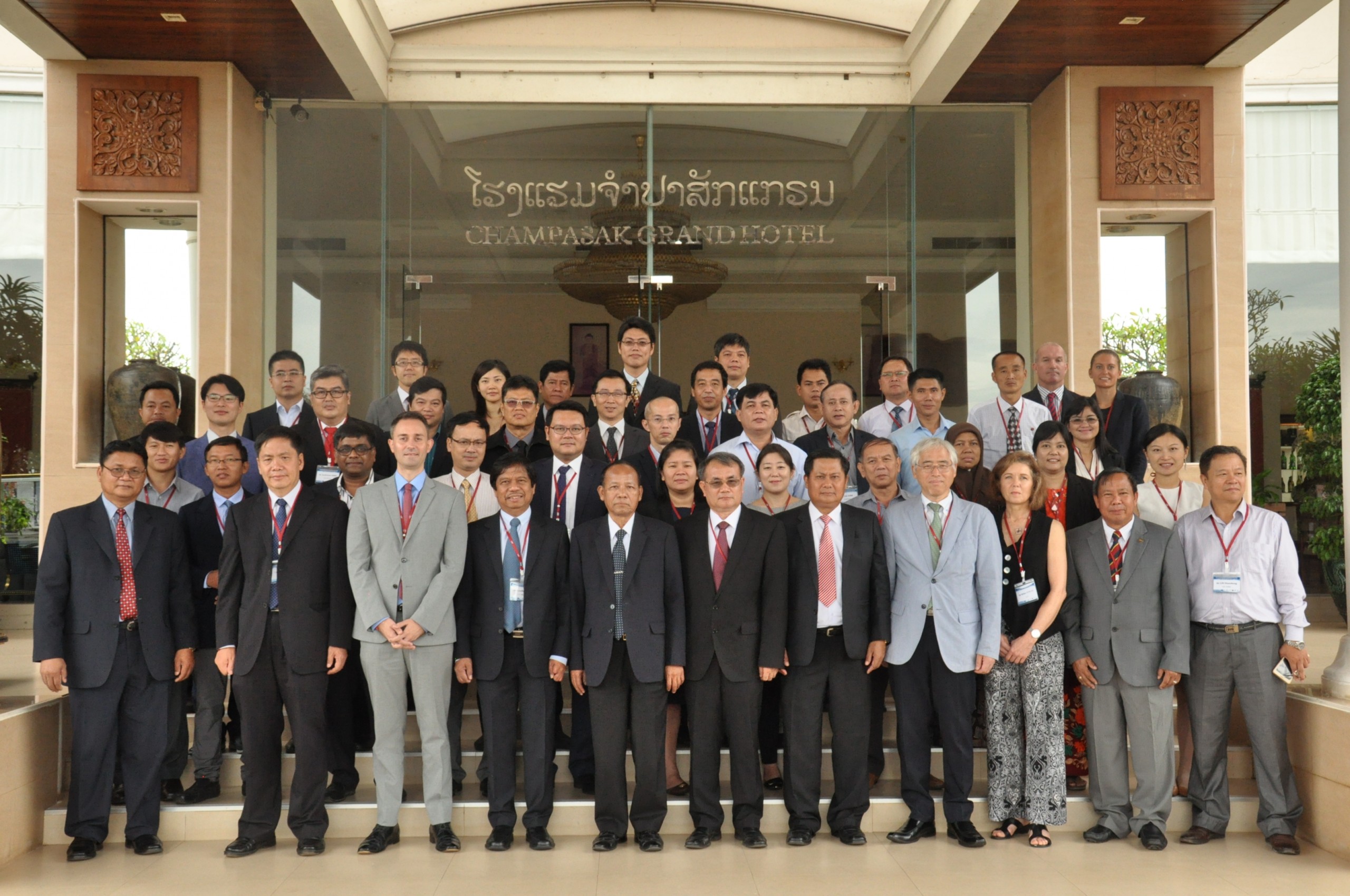The 20th South-East Asia and China Foot and Mouth Disease (SEACFMD) National Coordinators meeting was conducted in Pakse, Lao PDR on 16-18 August and discussed progress of the SEACFMD Campaign and the current regional FMD situation and risks, approaches to strengthen FMD surveillance and risk-based FMD control, and exchanged experiences and lessons learned from implementing the SEACFMD Roadmap. The three-day meeting likewise discussed the proposed SEACFMD Research Priorities for 2017-2020 and the action plan for the succeeding years of the SEACFMD Campaign. About 50 delegates from SEACFMD Member Countries, as well as the OIE staff, representatives from the OIE FMD Reference Laboratories, partners, donors and observers participated in the meeting.
In his welcome remarks, Champasak Vice Provincial Governor, Mr Somsanith Bouttivong, emphasized the importance of FMD control, particularly in Laos, because of its economic impact to the communities. He cited as an example the outbreak in Champasak last December 2016 which affected the livelihood of farmers. FMD is one of the main trade barriers in the exportation of live and animal products by Laos to neighboring countries. “Continued collaboration and coordination among the countries of the region are needed for effective FMD control,” he said, as he thanked delegates and OIE and wished for the success of the meeting.
Dr Ronello Abila and Dr Hirofumi Kugita, representatives of the OIE Sub-Regional Representation for South-East Asia (SRR-SEA) in Bangkok and OIE Regional Representation for Asia and the Pacific (RR) in Japan, respectively, both thanked Laos for hosting the meeting. Dr Abila described the meeting as historical because OIE RR and SRR-SEA joined together, for the first time, to review FMD situation in the region. He underscored the need for a stronger cooperation and unified plan due to the incursion of FMD serotype O/Ind2001d and Pan Asia in the region coming from South Asia. Dr Kugita meanwhile commended SEACFMD as a successful regional programme and assured that OIE RR will continue to work with countries within SEA, South Asia and the Pacific for the control of transboundary diseases including FMD. The joint meeting of the two sub-regions is expected to bring over-reaching benefits in terms of sharing information and expertise, resource synergy, enhancing coordination on FMD control for the whole region, among others.
Country reports highlighted key activities in FMD prevention and control with selected case examples from Myanmar, Laos, Malaysia and Thailand on FMD vaccination, methodology in FMD baseline survey, application for OIE endorsement of the national plan, and management of O/Ind2011d outbreak, respectively, to showcase good practice and lessons learned in implementing the SEACFMD Roadmap. This is to further encourage and inspire countries to apply science-based FMD control and prevention approaches. Laos presented the result of the study on the socio-economic impact of FMD mass vaccination while Indonesia shared the cost-benefit analysis of maintaining FMD freedom.
Presentations and workshops provided an opportunity for sharing of information and discussion on various topics such as FMD prevention and control activities; improving FMD monitoring and surveillance; early FMD detection, reporting and emergency response; risk-based control strategy for FMD; and PCP implementation plan. Country poster presentations supplemented the discussion on current FMD situation and FMD prevention and control activities in the region.
SEACFMD research priority areas were proposed to address knowledge and information gaps needed to translate the SEACFMD framework into action with the objective of facilitating regional efforts to progressively control and eradicate FMD. It must be noted that SEACFMD has entered its 5th phase of the campaign last 2016 and these research priorities shall set the direction of the studies to be pursued for the succeeding years of the campaign.
Prior to the SEACFMD NC meeting, a one-day workshop was conducted on August 15 to disseminate and review the findings of the risk analysis study on the incursion of exotic FMD viruses into South-East Asia commissioned by OIE. The study indicated the high likelihood of future incursions of exotic FMD viruses into the region as underlined by the detection of FMD serotype Asia 1 in Myanmar as recently as January 2017. Importation of live animals and animal products are the most likely risk pathways given the significant number of large ruminants imported informally due to high demand for meat, with South Asia as the main source.
Incursion of exotic FMD virus can compromise animal health and welfare which could lead to production losses and negatively impact trade. The study emphasized the importance of a regional approach as a key to reducing the risk. The workshop discussed the recommended risk-mitigation measures as well as formulated action plans for implementation of the recommended control measures. Member Countries are encouraged to strengthen FMD surveillance and response capacities, particularly, Myanmar, Malaysia, Lao PDR, Thailand and Vietnam who face higher risk. All countries in the region including China would benefit from mitigating the risk of incursion of exotic FMD virus.
The SEACFMD Campaign Action Plan for 2017-2018 was reviewed and the meeting concluded with key recommendations to guide the succeeding year of the campaign. A field trip to Nongsa village located in Champasak district was conducted on the last day of the meeting which provided opportunity for participants to better understand the livestock husbandry practice, the implementation of FMD vaccination as well as farmers’ perspectives on FMD control in southern Lao PDR.
The meeting was jointly funded by the governments of Australia, China and New Zealand.



